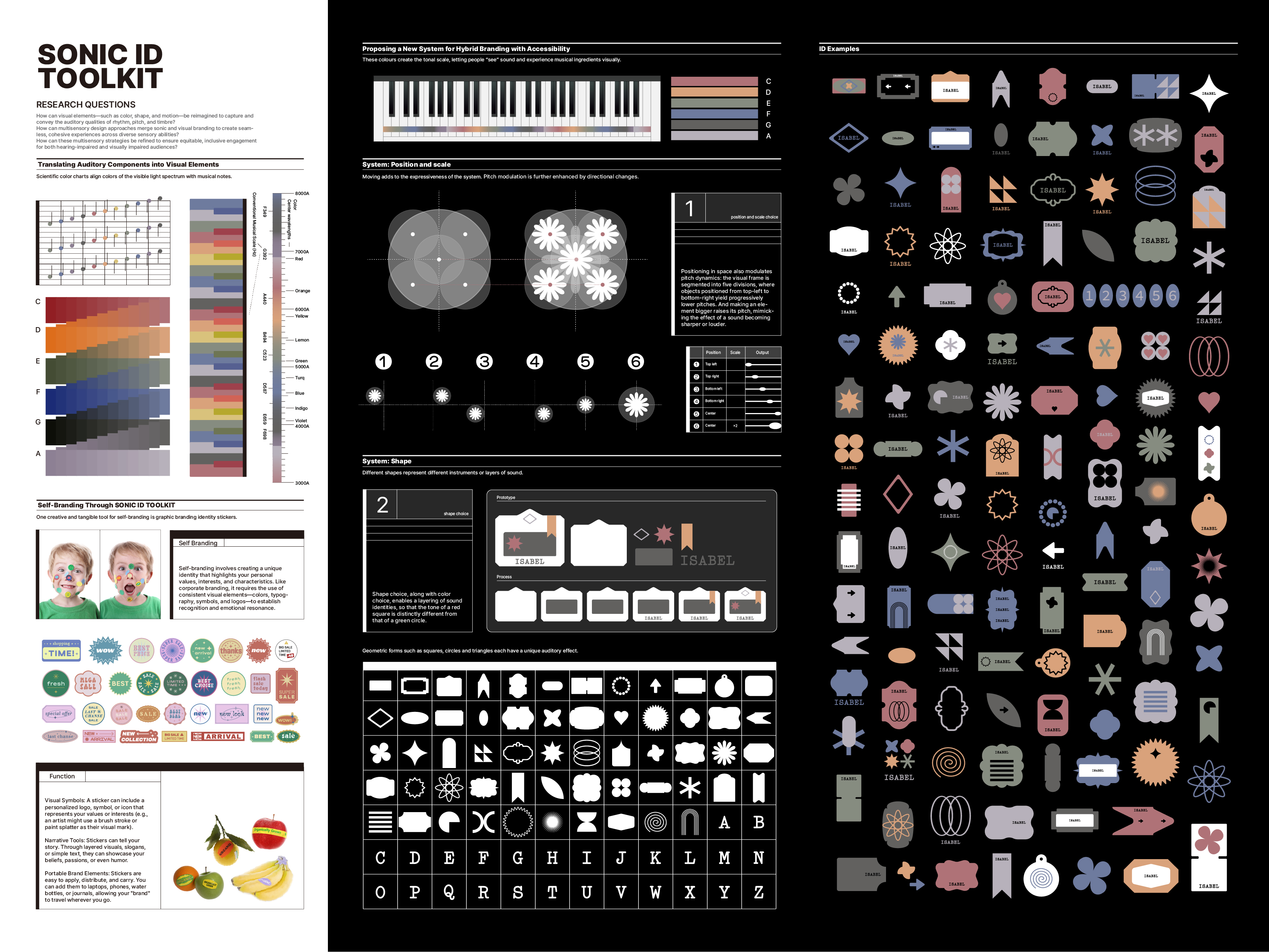Sonic branding is defined as the strategic use of sound to reinforce a brand's identity, evoke emotions, and enhance consumer engagement. The goal of this project is to broaden the multisensory approach of sonic branding by increasing its accessibility to people and ultimately integrating it more intimately into daily life.
The project aims to secure a richer branding strategy by combining sonic branding with traditional branding. To achieve this, I developed the sonic branding toolkit. With the toolkit, simply combining geometric forms automatically generates sound that corresponds to shapes, colors, positions, and sizes.
The images created in this way can serve as brand identities, and the generated sounds can be used for sonic branding. This toolkit is designed not only for corporations but also for individuals seeking to establish their own personal branding.
![]()
Sonic ID Campaign
This campaign is actually aimed more at individuals than at corporations. Through the toolkit, users can create their own unique Sonic ID and share it on social media and beyond. Anyone can generate a personal sound simply by combining their name with their favorite colors or shapes.
The resulting images and sounds can not only be uploaded to social media but are also free for commercial use. As the fusion of sonic and traditional branding becomes more widely recognized, the public’s understanding of a multisensory approach to branding will grow, potentially delivering more synergy than conventional branding alone.
Research shows that engaging multiple senses can enhance emotional connections and brand recall, which further supports this approach. Additionally, individuals with hearing or visual impairments, who have been marginalized by single-channel branding, will also be given the opportunity to experience branding.

Cultural Probe: Sound Portrait
Personal branding is about defining oneself as a brand—a desire inherent in everyone. I conducted qualitative research with seven participants to create their “sound portraits.”
By guiding them in selecting and combining different sounds, I demonstrated that the way they describe themselves could evolve into a more concrete definition of their identity.
Through this series of studies, I established a method for self-branding that utilizes both graphic design and sound, highlighting the transformative potential of a multisensory approach in personal branding.


Toolkit System
Based on the interplay of color, shape, motion, and spatial orientation, the hybrid branding system consists of visual elements that react and shape the sound. For example, a sound-color theory maps changes in color to particular musical notes. In this mapping, C, D, E, F, G, and A are represented visually with red, orange, green, blue, black, and light purple, respectively. These colours create the tonal scale, letting people “see” sound and experience musical ingredients visually (For example a brilliant red symbolises energy and a light blue represents calmness).
Shape is important too; different shapes represent different instruments or layers of sound. Geometric forms such as squares, circles and triangles each have a unique auditory effect: a square might create mechanical, percussive noises, while a circle generates smooth, flowing tones. Choices in shape, along color, enable a layering of sound identities, so that the tone of a red square is distinctly different from that of a green circle.
Movement adds to the expressiveness of the system with rhythm and tempo. More frantic movements translate into quick, frantic soundscapes, while slower movement equals a placid steady beat. Pitch modulation is further enhanced by directional changes, which can be upwards or downwards. Positioning in space also modulates pitch dynamics: the visual frame is segmented into five divisions, where objects positioned from top-left to bottom-right yield progressively lower pitches. And making an element bigger raises its pitch, mimicking the effect of a sound becoming sharper or louder.
